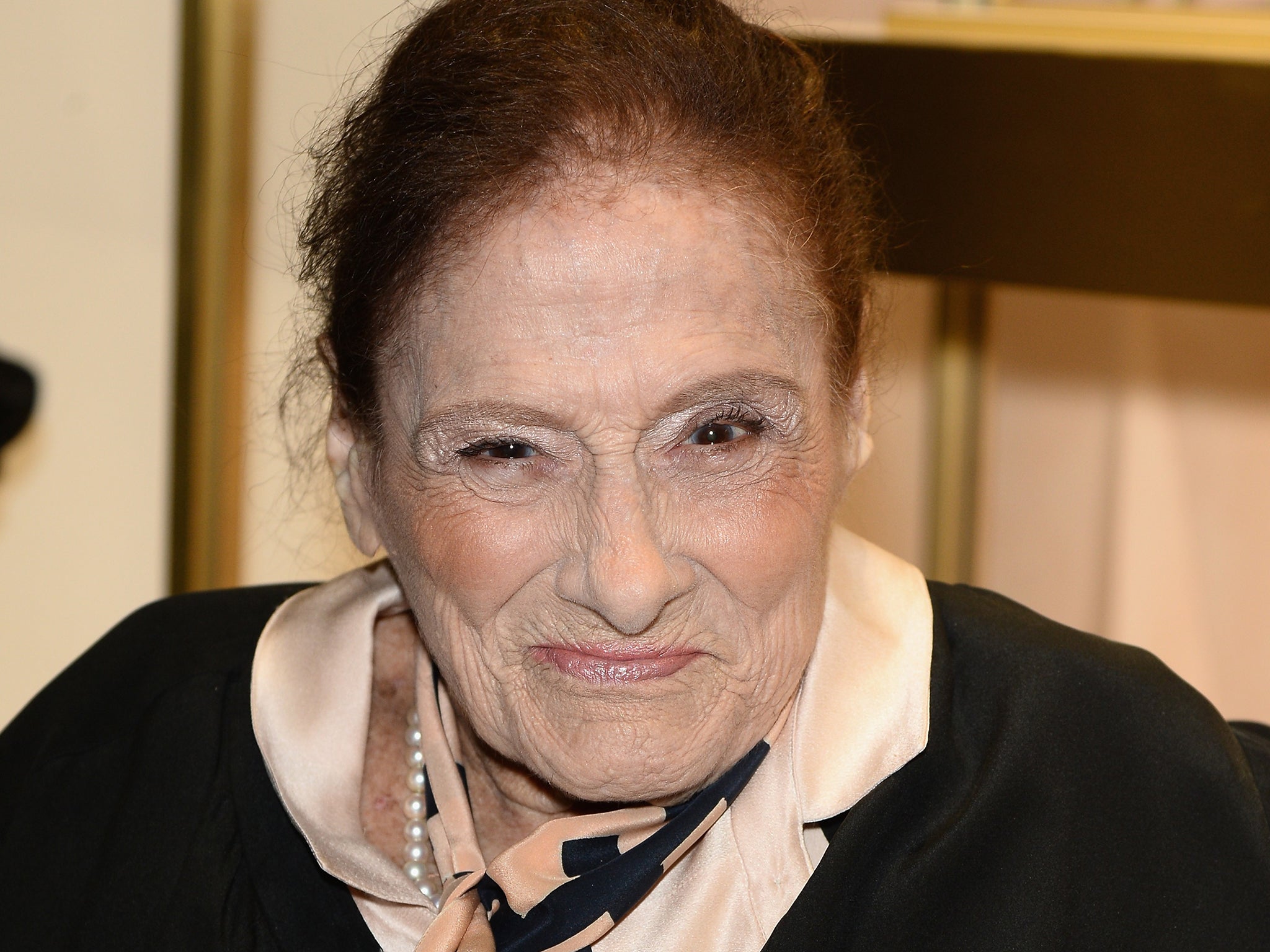Gaby Aghion, fashion designer: Co-founder of Chloe House, which revitalised French fashion in the 1950s
Fashion shows of the 1950s were incredibly formulaic, but Aghion wanted to show her style informally, over coffee and croissants

Gaby Aghion was the co-founder of the Chloé house, which revitalised the French fashion world of the 1950s and introduced the ready-to-wear concept to high fashion.
Born into a wealthy, intellectual Parisian family, Aghion, described by her company as a “dark beauty and bohemian spirit”, spent her youth in Alexandria. “Egypt is a colour for me. The sand is the most beautiful sand I have ever seen. A rose-tinted beige. It feels like silk in your hands,” she recalled of the shade and fabrication which were to symbolise Chloé.
As the recipient of what Aghion described as a “high-society French education”, she learnt the inherent essence of Parisian chic as an infant. Her mother was passionate about fashion, employing a seamstress to make clothes inspired by illustrations in French fashion magazines. Aghion was married at 19 to her childhood sweetheart, Raymond Aghion, the son of successful cotton importers. She had first met him at the age of seven when they both attended the local primary school. They moved together to Paris in 1945, “I had never seen such elegance in my life,” Aghion recalled. “For me, fashion was France.”
Though married to a man who could provide her with a leisurely lifestyle, Aghion was determined to exert her independence and earn her own money. “I wanted to make a few dresses in my style,” she said, proceeding to define her design signature in a couple of sentences: “Classic and simple. That’s Gaby Aghion.”
With a penchant for sports and beachwear, as opposed to the grandiose evening gowns of the 1950s, she bought some cotton poplin and made an edited capsule collection of six dresses. “It amused my intellectual friends,” she observed of the writers, artists and thinkers she surrounded herself with as part of the Left Bank bohemian set. “They said, ‘We give it two weeks’.” She borrowed her friend Chloé Huymans’ name for the brand, saying, “I thought it was pretty… I could not put my name on the label because at that time you couldn’t do that.”
Aghion presented her first collection to the press over breakfast at the famous Café de Flore, on the corner of Boulevard Saint-Germain. Not only were the clothes a breath of fresh air, the location and the way they were presented was groundbreaking. Fashion shows of the 1950s were incredibly formulaic, but Aghion wanted to show her style informally, over coffee and croissants. Comprising a predominantly neutral palette, Aghion’s vision of female wearability was a complete contradiction to the formality of Paris couture.
It felt uncomplicated and effortless, and success was instantaneous. Boutique owners and their customers completely related to Aghion’s concept of luxurious yet accessible, ready-to-wear. She described the speed of impact and the ensuing sales as “like a tornado”.
Together with her business partner, Jacques Lenoir, she employed half a dozen seamstresses to keep up with demand. She was on a quest to seek new talent to invigorate the Chloé brand, and it attained increased popularity when a talented young designer called Karl Lagerfeld joined the Chloé studio in 1963.
“I was a little reluctant to hire him, thinking Germans had questionable taste,” she remembered. “I went on to love Karl and form a special working relationship with him that lasted over two decades. I loved his cleverness – he was cultivated, and an art lover too.” Sophistication apart, she also admired Lagerfeld’s work ethic. “Other designers would bring me two designs. Karl would bring me 20 within a day.”
By 1966 Lagerfeld had been appointed chief designer, and it was under his influence – which ended in 1983 and began again for a five-year stint between 1992 and 1997 – that the label rose to prominence. Overseen by Aghion, but directed by Lagerfeld, the 1970s were the defining period for Chloé. “Lagerfeld arrived at a moment when he can give a shape to a time that is blurred and indistinct to everyone else,” wrote Vogue’s Joan Juliet Buck in 1979. “That time is now.”
Making the transition from an essentially French label to a globally recognised brand, Chloé began to attract a new, international clientele; customers who made a beeline for the Chloé boutique on Rue du Bac in Paris included Jackie Onassis, Brigitte Bardot, Maria Callas and Grace Kelly. Admitting that as an intellectual she could be a “little pretentious”, Aghion gave her collections names inspired by poets, composers, literary characters and figures from popular culture. They always followed an alphabetical sequence.
Chloé’s simple style, summed up by the company as “youthful and modern in design, and slightly audacious in spirit”, made it a perfect vehicle for a succession of designers to apply their signature. An exhibition called Chloé Attitudes, staged at the Palais de Tokyo in 2012 to coincide with Chloé’s 60th anniversary, featured 70 pieces reflecting the work of the nine key designers (including Aghion) who had steered the brand for more than half a century. Gérard Pipart, Maxime de la Falaise, Karl Lagerfeld, Martine Sitbon, Stella McCartney, Phoebe Philo, Hannah MacGibbon and Clare Waight Keller were all represented, while photographs from Helmut Newton, Guy Bourdin and David Bailey underlined the Chloé style. In 2013, Aghion was awarded the Legion d’Honneur for her contribution to fashion.
Actively involved in the business until 1985, when the Swiss luxury goods conglomerate Richemont bought the brand, Aghion remained an enduring presence at the Chloé catwalk show. “At the age of 92, if I had my time again, would I do anything differently?” she wondered aloud “Not a thing.”
Gabrielle Hanoka, fashion designer: born Alexandria, Egypt 1921; married Raymond Aghion (died 2009, one son); died Paris 27 September 2014.
Join our commenting forum
Join thought-provoking conversations, follow other Independent readers and see their replies
Comments